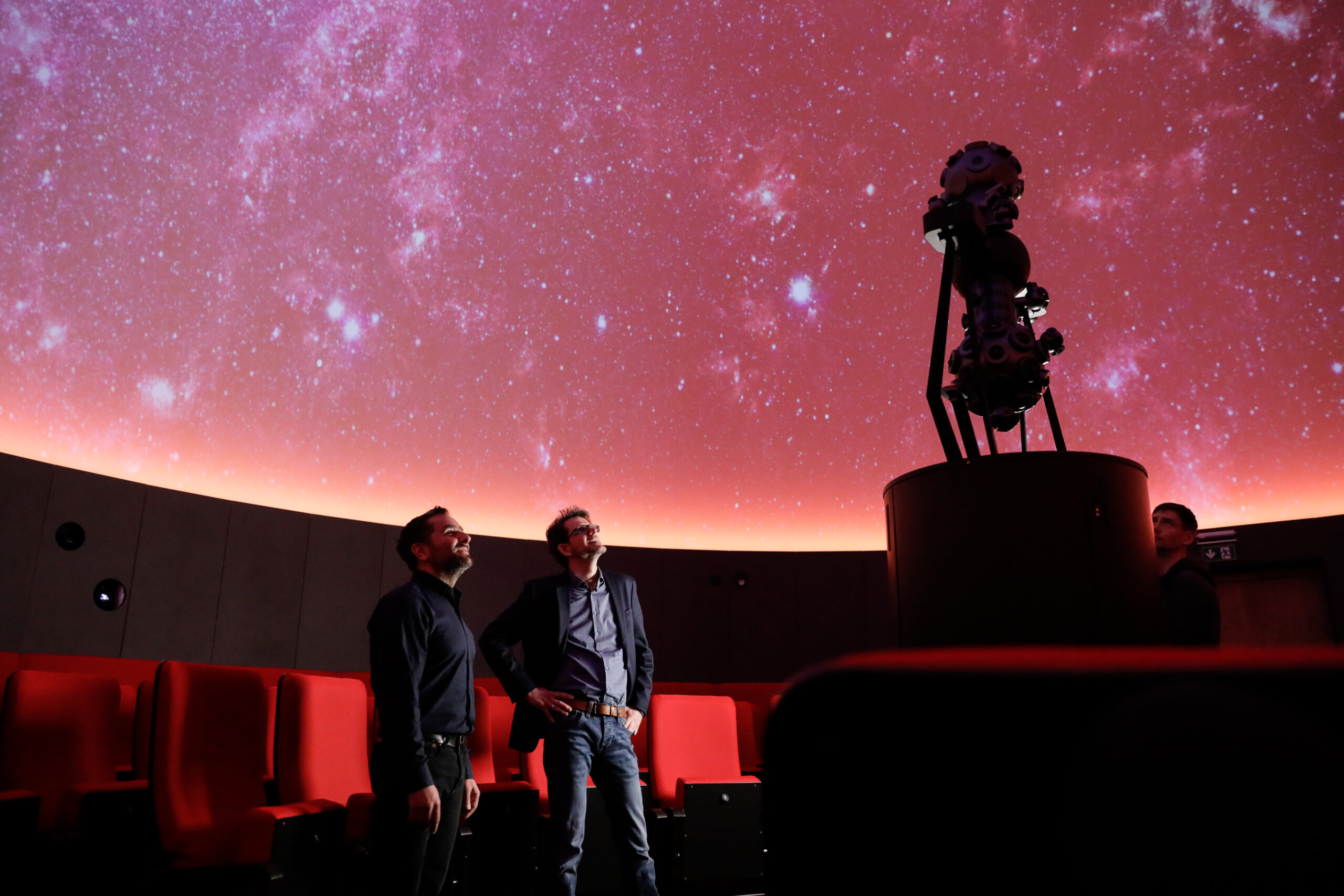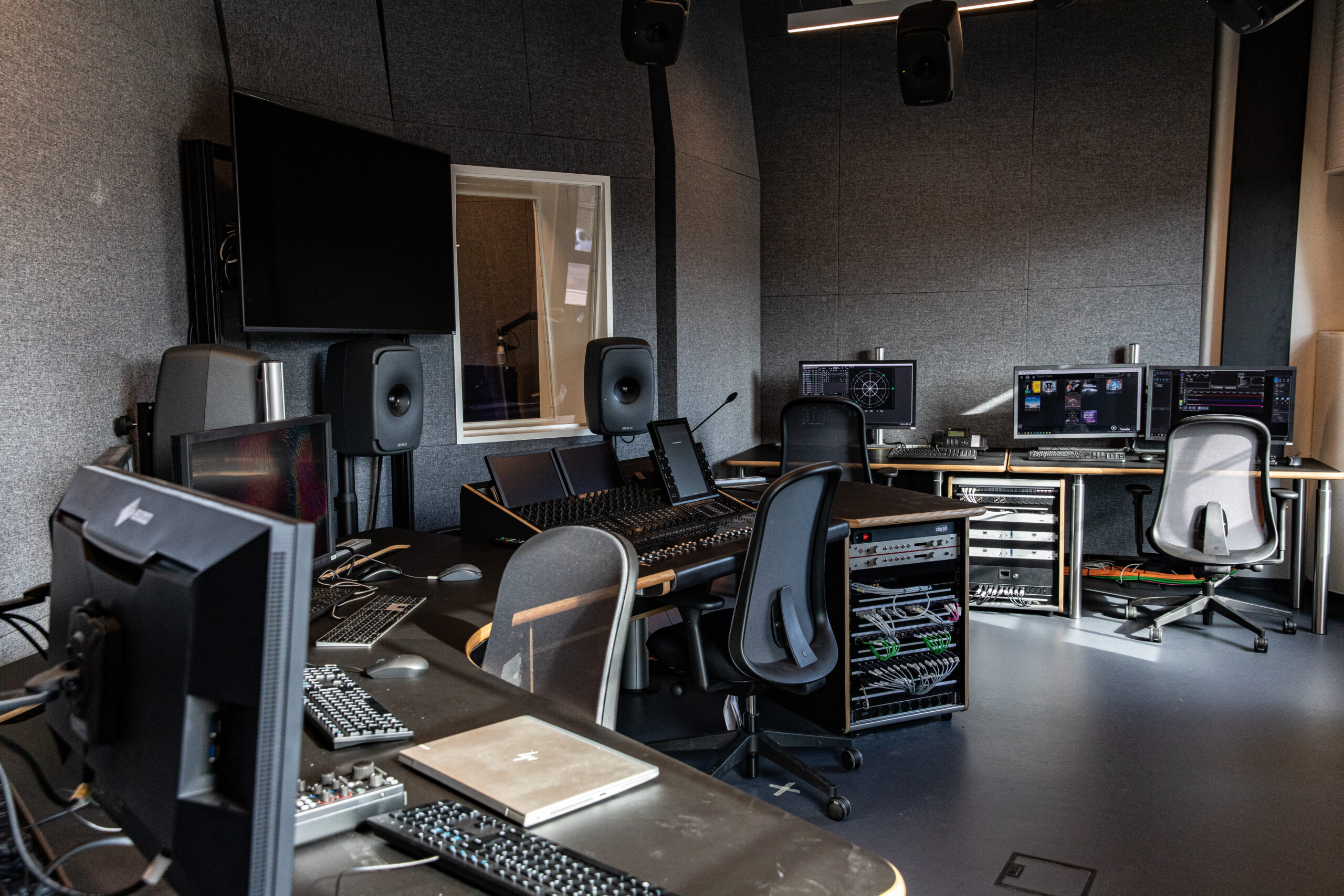Qvest Helps Halle Planetarium Reach For the Stars
Story Highlights
As project partner to Halle Planetarium in Germany, Qvest orchestrated several AV systems in the planetarium and observatory which make the visit for all galactic explorers a special experience. The Qvest expertise was also called on to design, supply and install an array of technical facilities including an immersive sound reproduction and a full-dome video production suite.

The Qvest team was able to bring the media technology knowledge to bear on a whole new sector – one where high-tech is literally used to reach for the stars every day. The Halle Planetarium opens to the public with a dome projection and observatory making it a one-of-a-kind venue for star gazers in Europe. At the heart of the planetarium is the Star Room. It can accommodate more than 100 people gazing in tilted seating at a dome that is 12 meters in diameter. The digital projection in the dome consists of several individual projection systems. One of the tasks for the Qvest team was to implement the precision-built projection systems into one fully integrated solution. This included calibrating all technical systems so that the E&S and VIOSO planetarium projection systems synchronize with the Zeiss LED projectors and other components of the multimedia system.
Another major media technology part specified and installed by Qvest is the sound system which is the largest for any European planetarium. A total of 48 speakers are mounted above the dome and connected via a Stagetec audio router to create an immersive audio experience. Qvest further installed an Avid Pro Tools audio interface and an Avid S6 mixing console to control room ambience sound. These components are part of a fully equipped production studio for the Planetarium Halle team to design, create and program their own planetarium shows.
Dirk Schlesier, Director of the Planetarium Halle, says, “We are very proud to host Europe’s most technically refined ‘star gate’ here in our hometown Halle. The unique venue stands for astronomy-based knowledge transfer and cultural experiences wherever they intersect. That is why we are looking forward to delivering stunning experiences for all our visitors, children, families and adults alike, that inspire the next generation of scientists and star travellers. Our partners at Qvest met all the special requirements that were needed to deliver the highest quality projection and impressive acoustics.”

Open to the public from March 30 2023, visitors at Planetarium Halle will be able to explore the very latest in astronomical discovery and experience the staggering beauty of celestial phenomena such as watching a star go supernova, a galaxy spiral and fantastic constellations of the night sky. Thanks to the blending of multiple projectors to create a single large image, visitors will be able to “fly” to the stars in a simulated three-dimensional cosmos. An automatic telescope on the roof can live stream images of the night sky from the observatory as a projection into the planetarium’s dome.
Jonathan Baker, Solutions Architect at Qvest, says, “The Halle Planetarium is an awe-inspiring and unique project that required the precise orchestration of different multimedia technology components into one. The success of this sophisticated and fascinating system integration underlines the degree to which our media technology expertise can be transferred to other industries and other installations.”
The former planetrarium on Peißnitz Island was irreparably damaged by flooding in 2013. Since 2019, construction and the technical installation have been underway on the new planetarium and observatory housed in the historic façade of a gasometer, originally built in 1891, in Halle an der Saale, Saxony-Anhalt, Germany. The gasometer which used to store gas for heating homes is finally transformed into a planetarium that stores and shares knowledge for everyone.
